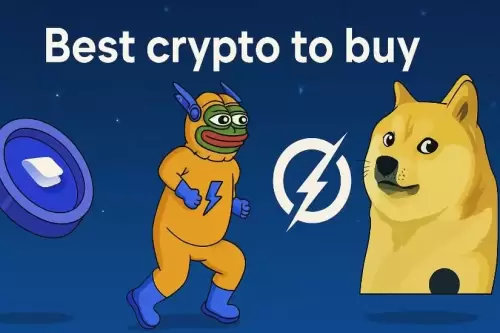 |
|
 |
|
 |
|
 |
|
 |
|
 |
|
 |
|
 |
|
 |
|
 |
|
 |
|
 |
|
 |
|
 |
|
 |
|
Cryptocurrency News Articles
After Years of Testing, the XRP Ledger Will Finally Launch Its Ethereum Virtual Machine-compatible Sidechain
Jun 11, 2025 at 06:09 pm
The development aims to expand XRP's utility beyond its traditional payment role by addressing alleged limitations in DeFi's programmability.
The XRP Ledger will finally launch its Ethereum Virtual Machine-compatible sidechain in the second quarter of 2025, after years of testing.
The development, which integrates Ethereum’s smart contract capabilities into the XRPL ecosystem, was confirmed by Ripple Chief Technology Officer David remarked at the Apex 2025 event. It aims to expand XRP’s utility beyond its traditional payment role and address alleged limitations in DeFi’s programmability.
A joint effort by Ripple and Peersyst Technology, the sidechain provides full EVM compatibility, enabling developers to deploy applications using established Ethereum tools like Solidity, MetaMask, and Truffle. Transactions on the network will utilize wXRP as the native gas token.
How the sidechain works
The Axelar network will serve as the exclusive bridge for transferring assets, including the XRP needed to create wXRP, between the XRPL mainnet and the new EVM sidechain. The architecture also connects XRPL to the more than 69 other blockchain ecosystems supported by Axelar.
The sidechain will operate on a Proof-of-Authority (PoA) consensus mechanism, selected for its performance and efficiency. It is designed to achieve over 1,000 transactions per second and transaction costs below $0.01.
To ensure network integrity, the sidechain’s code underwent a security audit by Informal Systems in February 2025. The audit identified and led to the resolution of one critical issue related to a Cosmos SDK module, with other findings being of low risk.
This initiative is a strategic effort to attract developers from the larger EVM ecosystem and provide new avenues for applications on the XRP Ledger. By lowering the barrier to entry, the sidechain may foster a more diverse application environment for XRPL’s user base, which holds over six million wallets.
The use of wXRP for transaction fees introduces a new demand mechanism for the XRP token, tying its utility directly to the activity level on the EVM sidechain. This could extend its tokenomics beyond its primary function in facilitating cross-border settlements.
Activity on the sidechain’s testnet suggests initial interest from developers. According to a post from Peersyst, projects including Strobe Finance, Vertex Protocol, and Secured Labs are already building applications.
The firm also reported that 87 new entities with no prior involvement in the XRP ecosystem are now contributing on the testnet, suggesting the potential for broad ecosystem growth upon the mainnet’s release.
As a sidechain, these new capabilities are being added without altering the XRPL mainnet’s core protocol, which remains optimized for payments. The mainnet launch of the XRPL EVM Sidechain is set to proceed in the second quarter of 2025.
Disclaimer:info@kdj.com
The information provided is not trading advice. kdj.com does not assume any responsibility for any investments made based on the information provided in this article. Cryptocurrencies are highly volatile and it is highly recommended that you invest with caution after thorough research!
If you believe that the content used on this website infringes your copyright, please contact us immediately (info@kdj.com) and we will delete it promptly.





























































